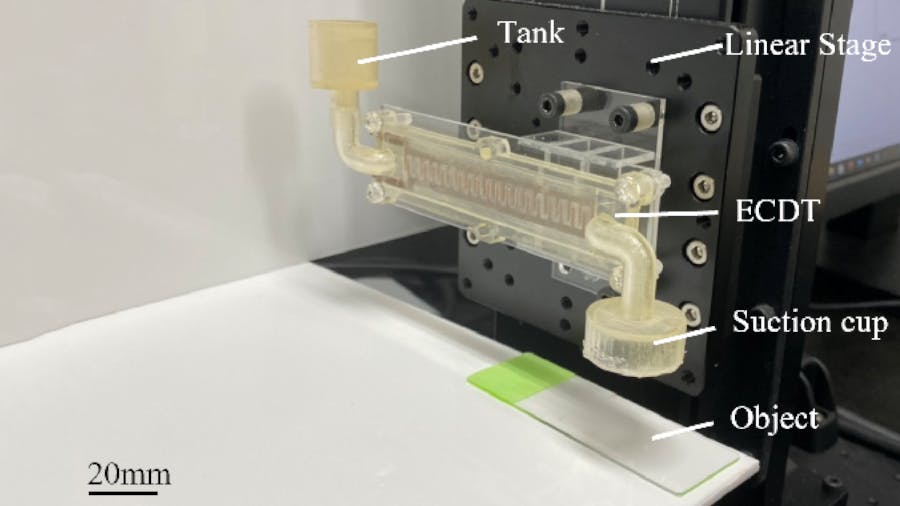
Electrochemical Pump Can Drive Soft Robotics — And Act as a Sensor, Too
from hackster.io
A team of engineers at the Shibaura Institute of Technology have demonstrated what they describe as an "electrochemical dual transducer," designed to both drive soft robots and to provide them with the ability to sense and grasp objects — and all without adding bulk to the design.
"Self-sensing technology has attracted much attention recently for compactifying soft robots," says project lead Shingo Maeda, professor at the Institute and senior author of the paper. "Incorporating sensors in soft robots enhances their multifunctionality, but often make for complex wiring and bloating. Self-sensing actuation technology can help solve this issue and allow for miniaturization of soft robots."
The devices demonstrated by Maeda and colleagues are based on an electrochemical process, where electric motor operation is replaced by chemical reactions, with an electrohydrodynamic (EHD) pump capable of sensing the flow of the working fluid within the system."The advantages of the ECDT are that it does not require any special equipment or complex processing for its fabrication," Maeda claims. "Moreover, it is small, lightweight, and demonstrates a wide range of sensitivity."
The ECDTs demonstrated in the paper are built using PET sheets, copper tapes, and acrylic elastomers, using a cutting plotter and a laser cutter. Applying a voltage to the ECDT induces the electrohydrodynamic effect — pumping the liquid to drive the robot. At the same time, the ECDT can act as a sensor sensitive enough to allow the resulting soft robot to detect contact with and hold an object — demonstrated with a piece of gelatin and a section of zucchini.
The team's work has been published in the journal ACS Applied Materials & Interfaces under open-access terms.


Leave a comment